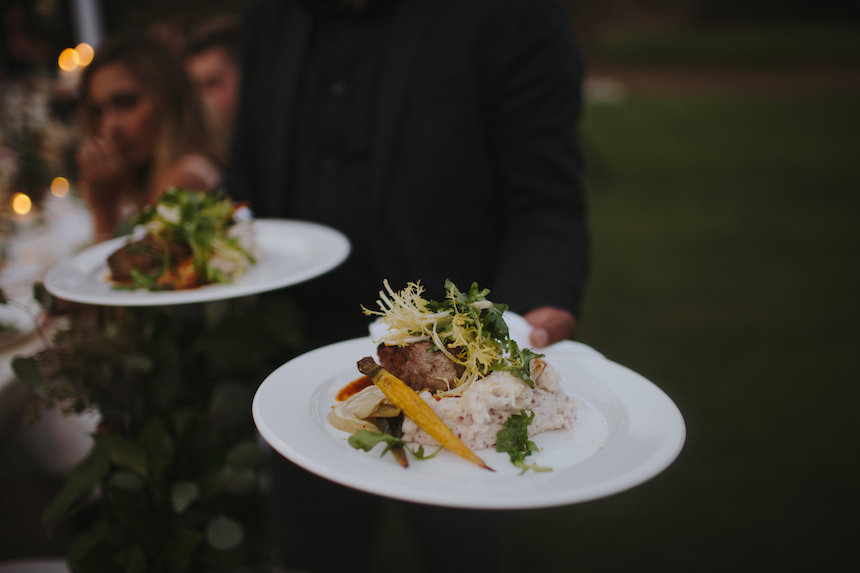
At some point during the wedding planning process, you will need to decide on the type of meal service you would like to offer to your guests: plated or buffet. We’re taking a closer look at the plated service style, providing you a list of pros and cons to help you make your decision. It’s always a good idea to be aware of all of the factors associated with any style of service, to make sure it fits with your overall vision for the day!
Pro: It elevates your guest experiece and is time efficient
Serving your guests a plated meal increases the formality of your reception, giving them a more elegant experience. It allows your guests to sit back, relax, and be served without having to stand and wait in a buffet line. It also expedites your overall dinner time to have meals delivered straight to your guests by trained waitstaff. Even with multiple courses, your guests are likely to finish their meals more quickly than if they had to stand in line at a buffet. This allows you more time for dancing.
Con: Your guests have less opportunities to mingle
If you are going for a more relaxed vibe, a plated meal might feel too formal and stuffy for your group. You may want your guests to have the opportunity to mingle more with other guests rather than being confined to their dinner table.
Pro: It can be less expensive
It may surprise you, but plated meals are often less expensive than buffet-style meals. This is mostly due to the fact that the caterer is able to receive entree counts for plated meals ahead of time and can plan for an exact amount of portions. When there is a buffet, the caterer is estimating portions and often preparing extra to ensure you don’t run out, mainly because guests always take more than they can eat.
Con: Guests may have to choose their entree when they RSVP
When offering a plated meal, you can decide on doing a duet entree option or giving your guests a choice of entree. A duet option is selected by you in advance and includes half portions of two different meats on the same plate (meat/chicken/fish) with sides. Your guests are not given a choice with the duet option, however you will still want to include a spot on your RSVP card for guests to note any dietary restrictions. If you prefer to give your guests a choice of entree (typically two options plus vegetarian as a third), you will need to obtain counts in advance. This entails having your guests mark their selection on their RSVP card so you can record entree counts, which takes some work on your end. Additionally, you will need to provide place cards or escort cards for each guest with entree symbols that are easy to read for the waitstaff.
Pro: You can spread out your reception events during dinner
Since tables receive their meals at the same time with a plated service style, you are able to spread out your reception events in between courses (toasts, special dances) to keep your guests engaged and maximize your time for open dancing.
Photographer – Hannahbeth Photography | Contact: hannahsiegrist@gmail.com
